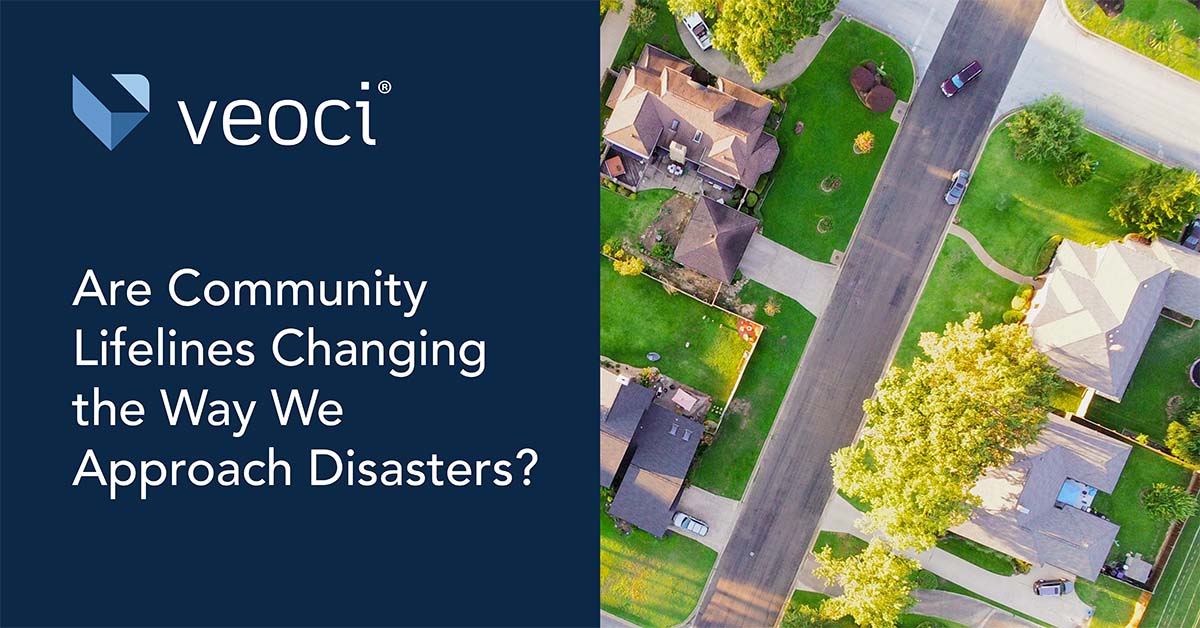The FEMA Community Lifelines outline seven basic functions and structures communities rely on to survive.
Emergency management practitioners have always been aware of the webs of continuity in communities and how those dependencies factor into planning and response; the Community Lifelines framework brings those connections to the forefront and helps all stakeholders work within the response.
After a few years of trial and error, it’s worth asking what impact the Community Lifelines have had on the way practitioners approach disaster response and recovery.
The FEMA Community Lifelines Explained
FEMA introduced and tested the Community Lifelines in disasters through 2018, 2019, and 2020. The framework relies on plain language and maintaining a suite of essential functions all communities rely on.
The framework identifies seven basic functions and services, which include:
- Safety and Security
- Food, Water, and Shelter
- Health and Medical
- Energy (Power and Fuel)
- Communications
- Transportation
- Hazardous Materials
Everything in a society, according to the Community Lifelines framework, is founded in the daily success of these pillars. After a disaster, FEMA advises that teams use the Community Lifelines framework to lead an objective-based recovery and re-establish the flow of all these functions.
The Community Lifelines create a natural priority list that can significantly speed up the recovery of a community following a disaster. If the essential functions are running, other pieces can slowly come together and build into a state of homeostasis once again.
Democratizing Disaster Response
Since the concept’s introduction, it’s been picked up by many small governments and response bodies and worked into existing response frameworks. Community Lifelines opens a door to emergency management for those who haven’t spent much in the field and makes both responding and observing disaster responses more approachable.
There being no barrier to entry in the new FEMA framework allows teams to welcome anyone into an active response, which compliments the holistic view of community wellness imparted by the Community Lifelines framework.
No one person or body in a community will control all of the outlined essential functions. Outside stakeholders like local business owners or directors of municipal services may need to work closely with an EOC and its response team during recovery, especially under this framework. The more comfortable and informed stakeholders are in the EOC, the faster essential functions can come back online and restore a community.
The Community Lifelines framework brings in a simple 3 tier status system as well. Green means no issues; yellow indicates an active stabilization effort following a disruption; red spells a disruption without an identified solution. This tier system is what helps establish priority, and its simple construct makes priorities easy to recognize at a team level.
The simplicity is intended; Jeffrey Byard developed the system through prominent disasters throughout his tenure in FEMA’s leadership. The framework’s success was built on its approachability, and it eventually made its way into the National Response Framework (NRF). After leaving FEMA, he joined Team Rubicon and ported the ideas into operations there as well.
Working with Dependencies
The Community Lifelines framework brings in a concept business continuity and COOP professionals are already well-versed in: dependencies. Community Lifelines recognizes the interconnecitcity of today’s world, something the events of the past 2 years, namely the Covid-19 pandemic, have stressed.
Functions and services rely on each other to maintain availability. Through a disaster and response, function and service owners must communicate with other community stakeholders to keep them ready for potential downtime. Sometimes downtime is unavoidable, but a little intelligence can let function owners kickstart their mitigation plans and achieve stabilization faster.
State and local agencies need to have these dependencies mapped and the technology to field the insights. This new model’s success does ask for sizable information imports and sturdy communication and collaboration infrastructure, which emergency management software platforms can tackle.
Automatic notifications help keep stakeholders aware of changes in the status of certain functions and expedite disruption resolution. Dashboards can quickly adapt the color status tier system of the Community Lifelines to put a quick visual of the response in front of all stakeholders.
Collaboration and communication also facilitate continuity planning, and any emergency management platforms create this type of working environment through its features. Opening the door to the EOC will let function owners walk in and provide critical information during the planning and response phases.
FEMA’s Community Lifelines focus on the knowledge and responsibilities of the individuals within a community. While EOCs have always recognized the impact individuals play in a response, the Community Lifelines framework requires a much more open policy and more community outreach to bring in even more individuals.
Rethinking Disaster Responses
The FEMA Community Lifelines immediately made an impact, and these standards will continue to shape the way local governments and other agencies respond to disaster as this 2020s progress. Communities are more connected than ever before, and plans and responses need to account for this fact while restoring a community post-disaster.








